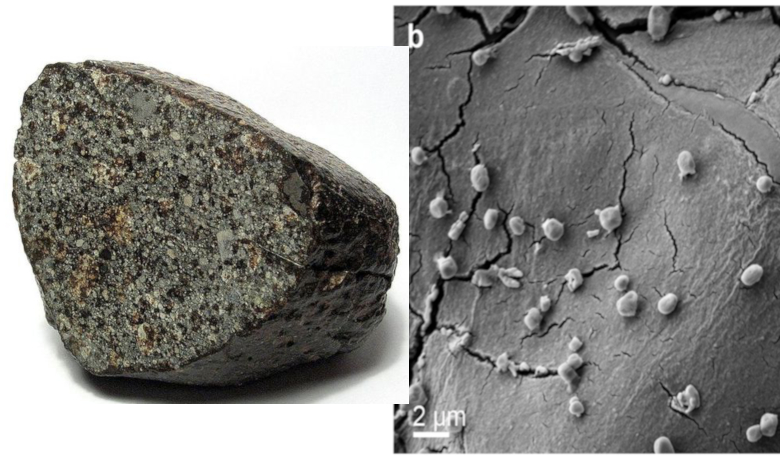While exploring the idea of how interstellar rocks might have had a hand in delivering more than just essential compounds to Earth, an international team of astrobiologists have found that a micro-sized microbe that typically lives in hot acidic conditions has a rampant taste for meteoritic material. Not only that, but the microbe appears to dance when its fed its rich diet of extraterrestrial metal.
Metallosphaera sedula or M. sedula, contains a single, circular chromosome (a deoxyribonucleic acid (DNA) molecule) and it is roughly one micron in diameter with hair-like structures protruding from its surface.
M. sedula is a type of Archaean which is a type of prokaryote and on Earth, they literally get almost everywhere; some varieties can be found living in the stomachs of humans and other animals where they aid digestion.
But this particular type likes nothing more than to munch on metals to derive its energy (a technical term known as chemolithostrop). So much so that its name can be roughly translated into “metal mobilising sphere.”
Because of its unusually tolerant of heavy metals, M. sedula has already been experimented on in the lab, where scientists have grown it on Martian regolith simulants - material that looks and feels like ground-down rocks on Mars, but isn’t actually the real stuff – to see how it reacted.
It turns out, it loved it.
One of the most abundant types of naturally occurring meteorites – the primitive (chondritic) class – are packed with metals, especially iron and nickel, so a different team, headed by Tetyana Milojevic from the University of Vienna, decided to feed M. sedula an actual meteorite dubbed NWA 1172, named after its site of discovery in Northwest Africa, to see if the microorganism had the same unquenchable appetite.
The result, noted Milojevic and colleagues, was even more profound. After feeding on trapped metals in the meteorite, the metal-loving archaeon not only came back for seconds, but it also became very animated after its meal.
“Our students in the lab also immediately noticed the cells are very vivid, they're dancing on the space rock,” Milojevic said.
For comparison, another set of similar microbial cultures were fed a different diet of ground-up chalcopyrite, a copper-iron-sulphur mineral.
They loved it too, but the growth rate of the meteorite-fed M. sedula peaked a lot faster than the sample eating chalcopyrite.
Milojevic and colleagues results, that were published in Nature last week, show that a closer inspection of the samples also revealed the “presence of extracellular vesicle-like morphologies”, in other words, bubbles.
These tiny bubbles were seen outside of the microbe’s bodies, and are thought to help catalyse iron oxidation reactions and possibly make their meal more tolerable by reducing the toxicity of their meal.
"Meteorite-fitness seems to be more beneficial for this ancient microorganism than a diet on terrestrial mineral sources," says Milojevic.
The microbes preference to live in conditions that other organisms find uninhabitable makes it a good probe for ascertaining what type of life might have survived on an early Earth, as well as the possibilities for the survival of life elsewhere in the universe.
And due to its ability to oxidise some metals, especially pyrite (FeS2), M. sedula has already been earmarked for potential use in extracting minerals, or biomining as it is otherwise known.
On Earth, biomining is currently a small part of the overall mining industry, but there is the potential to expand this off world when the technology becomes available.











